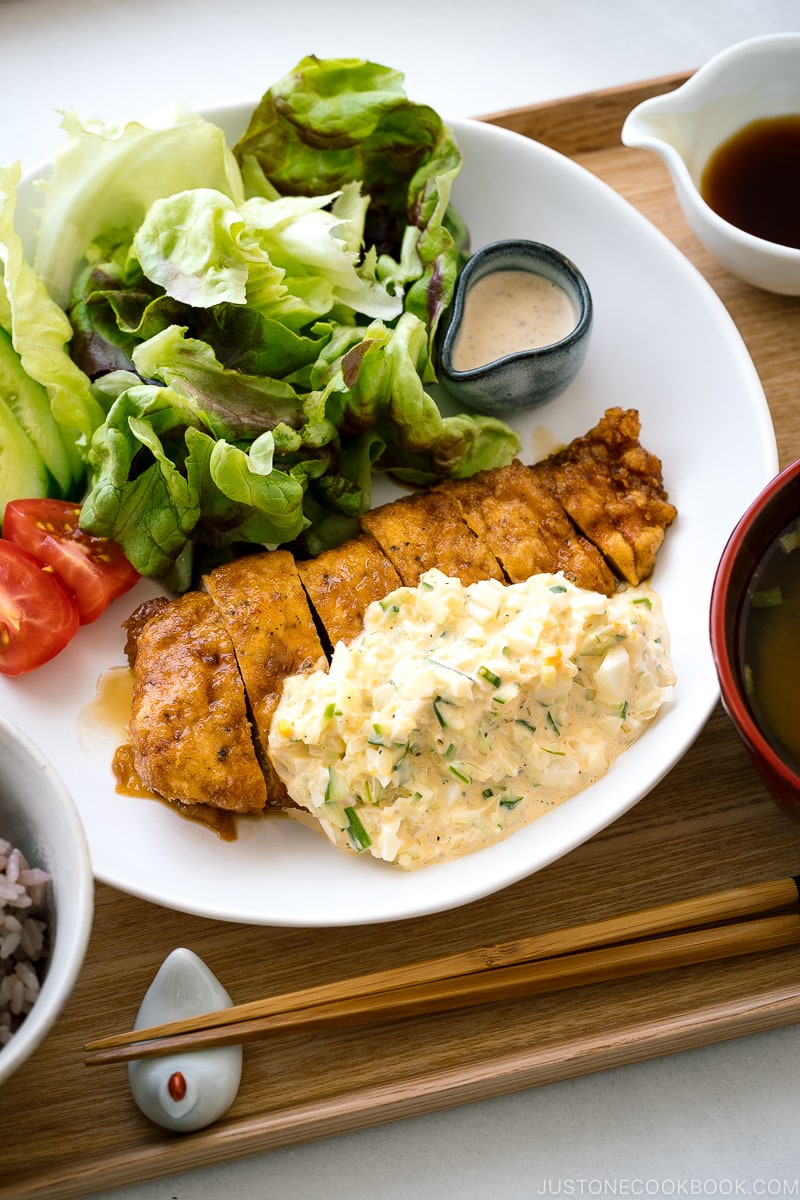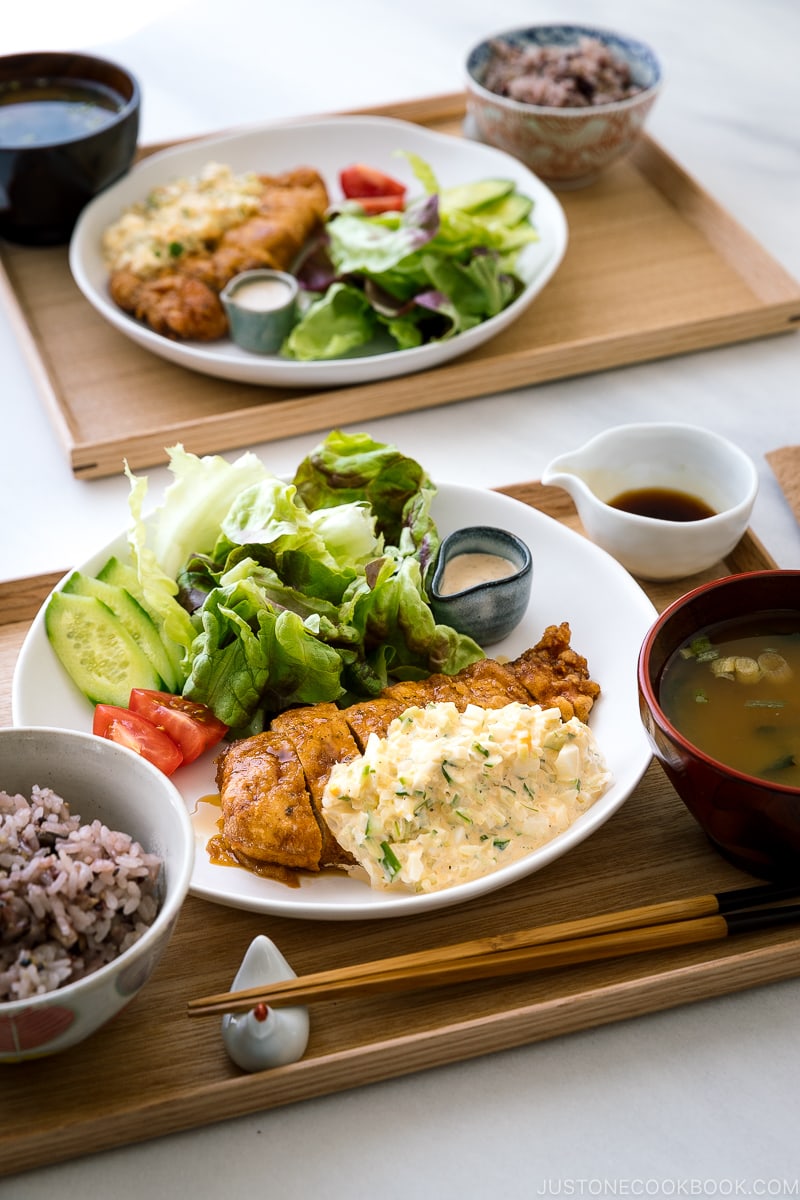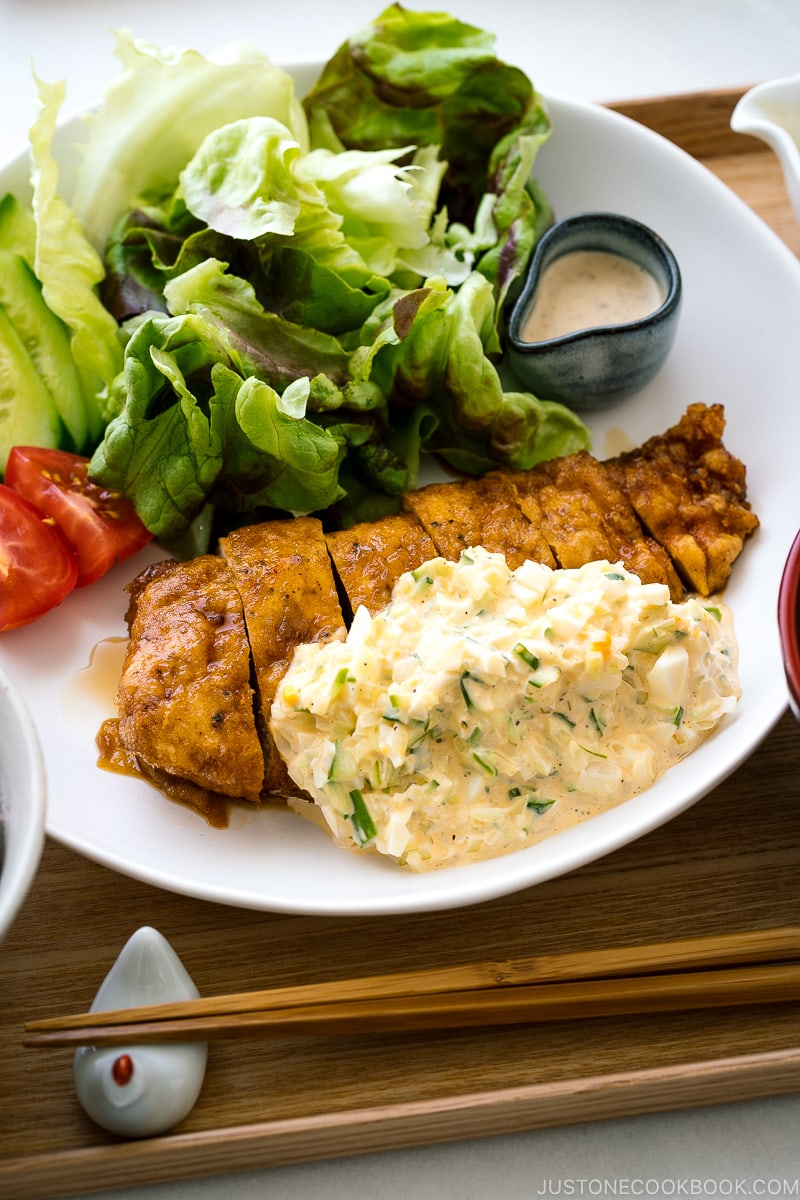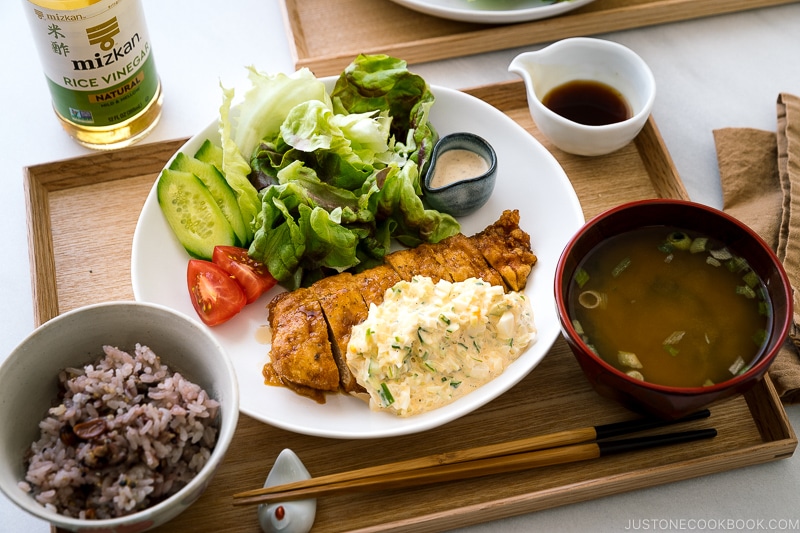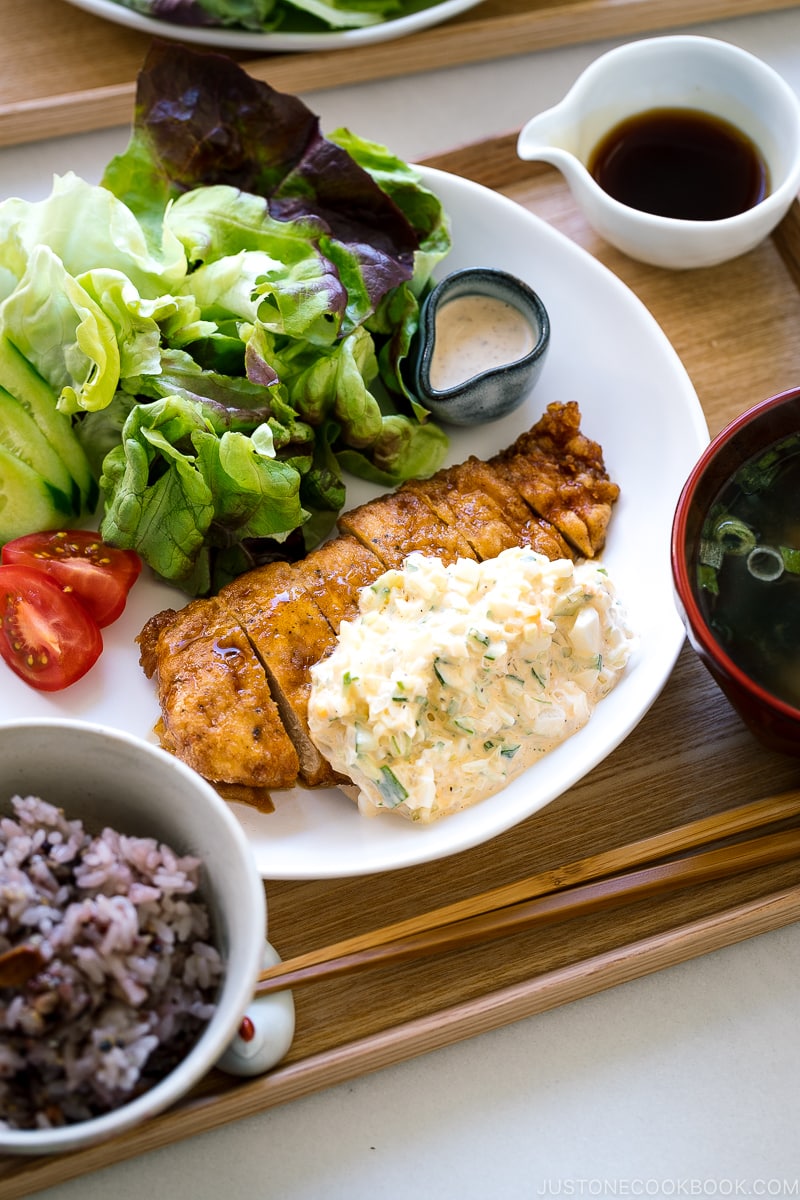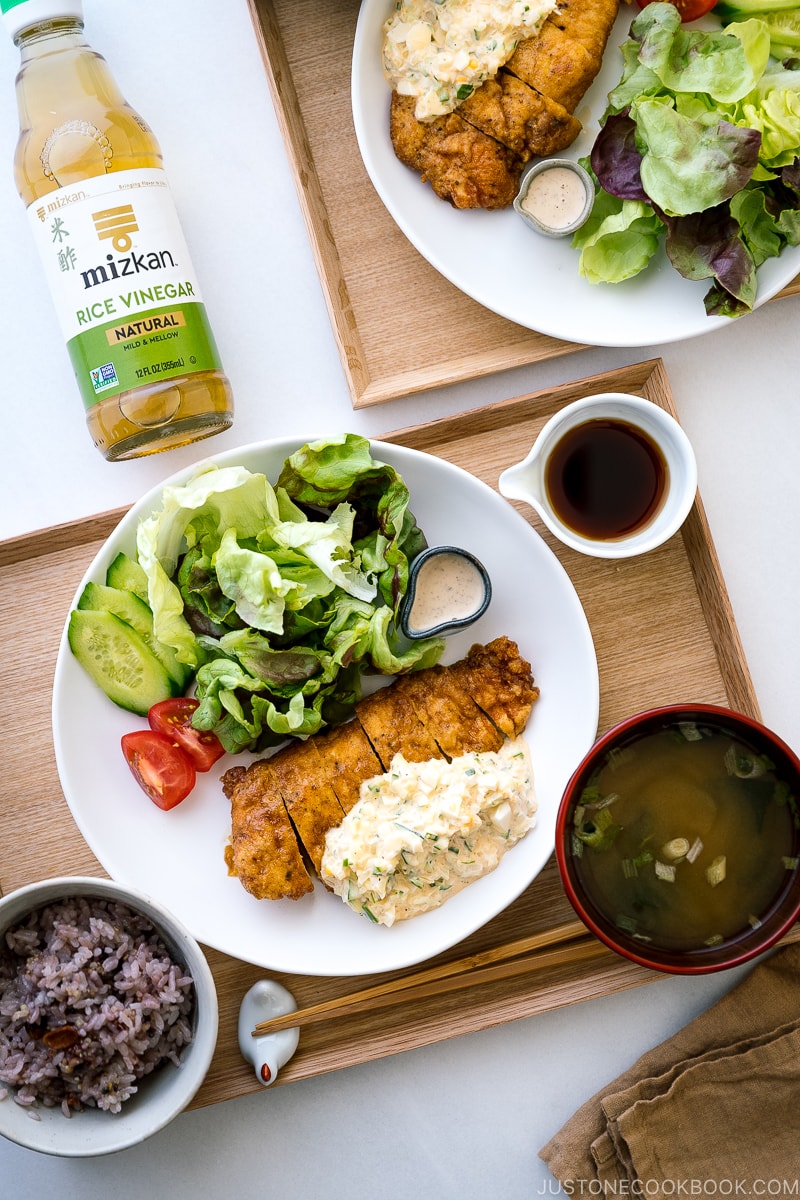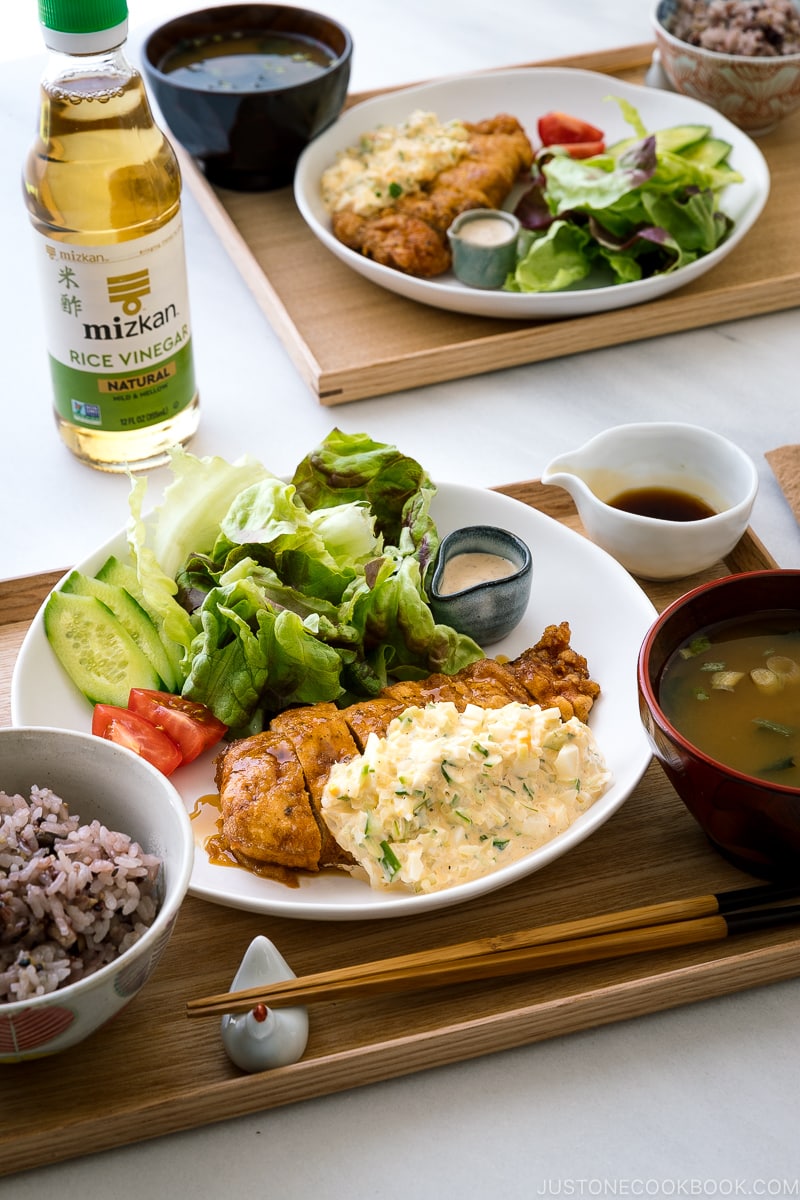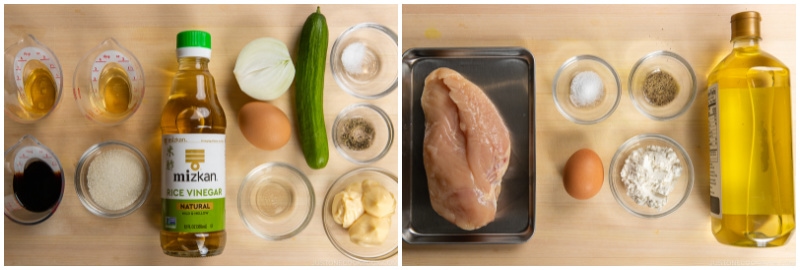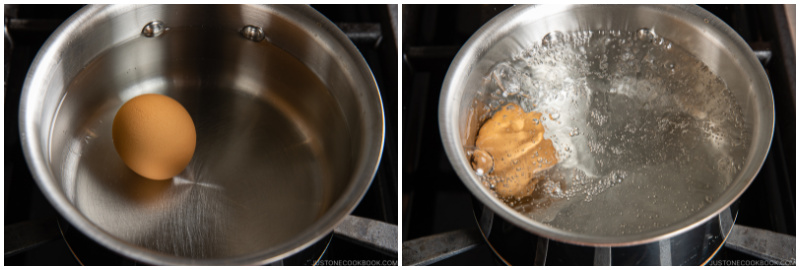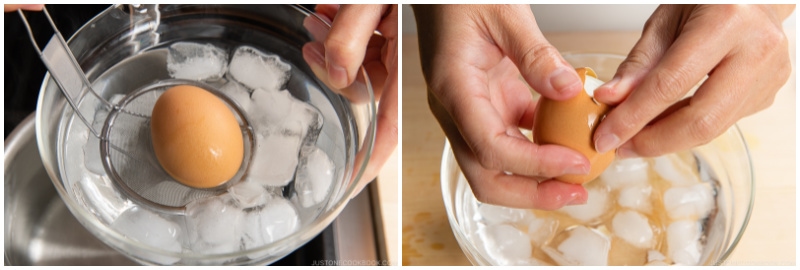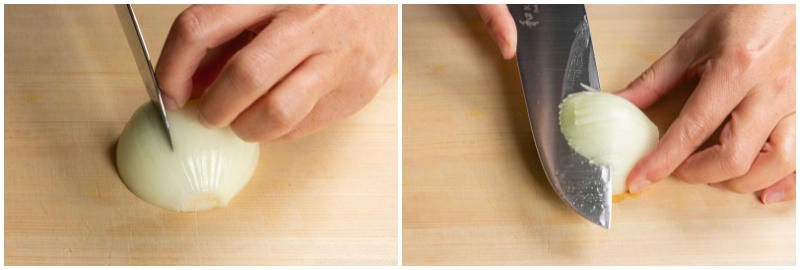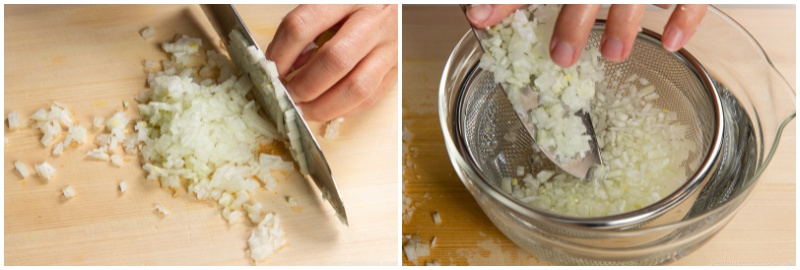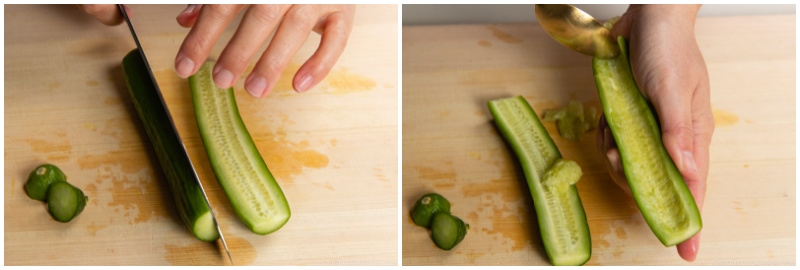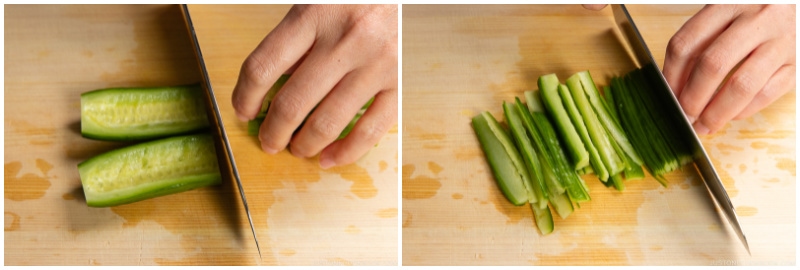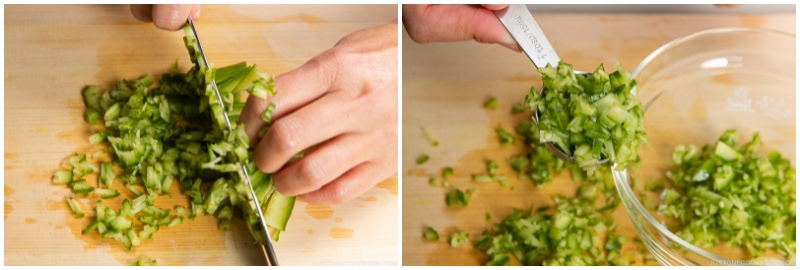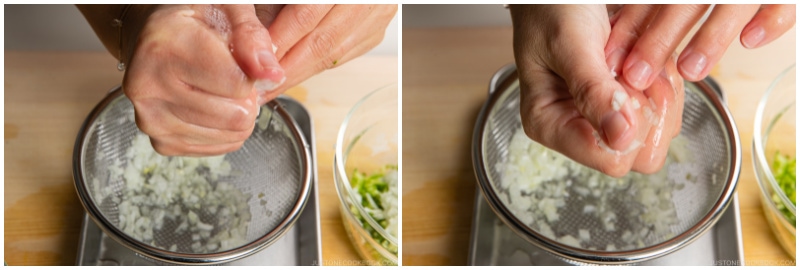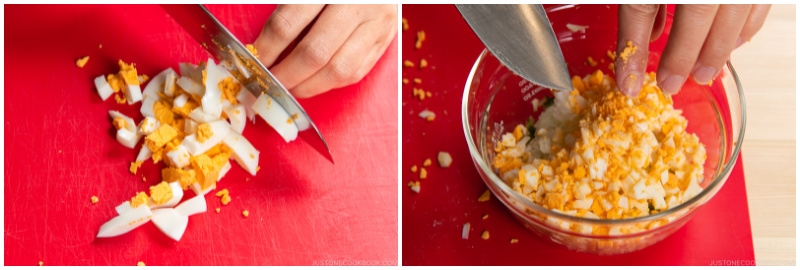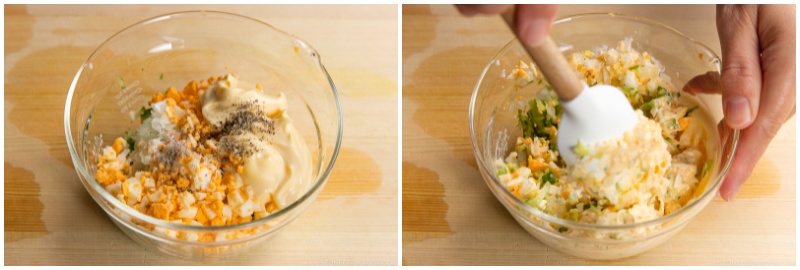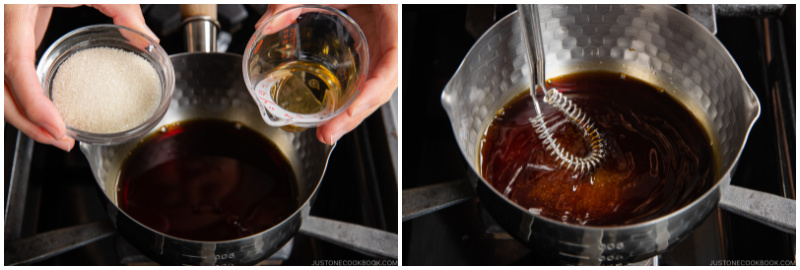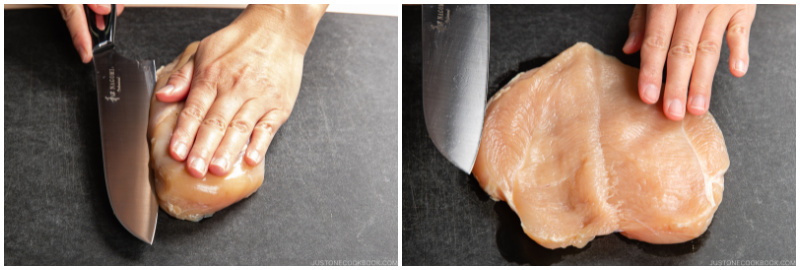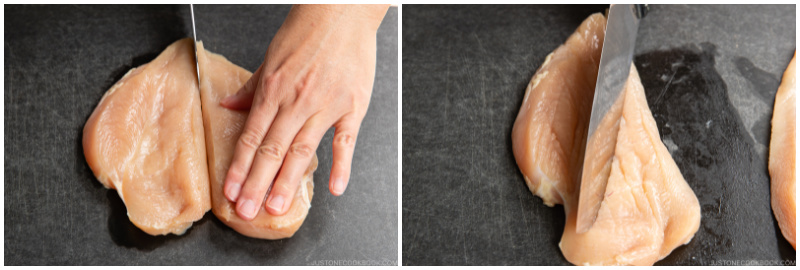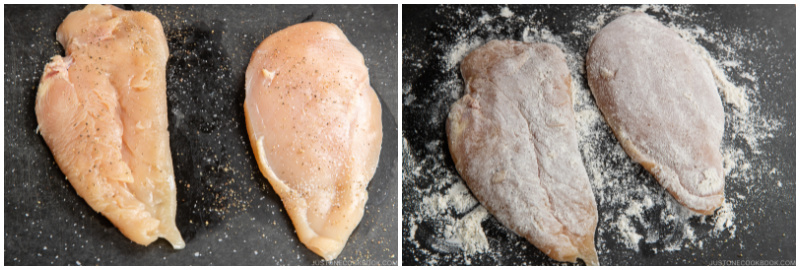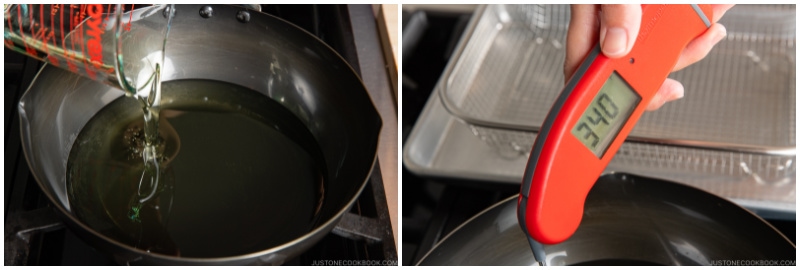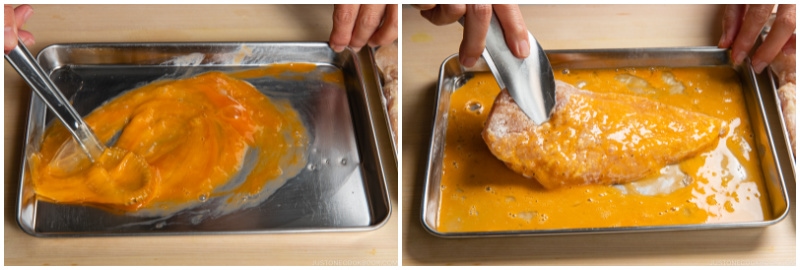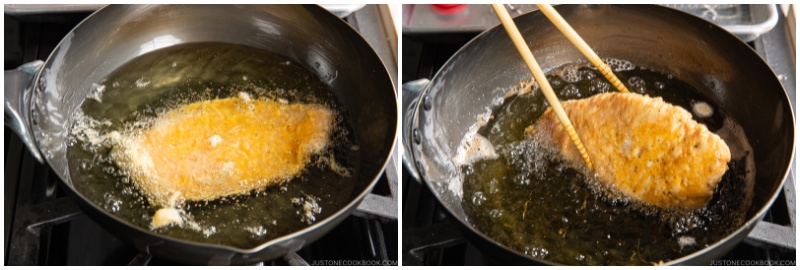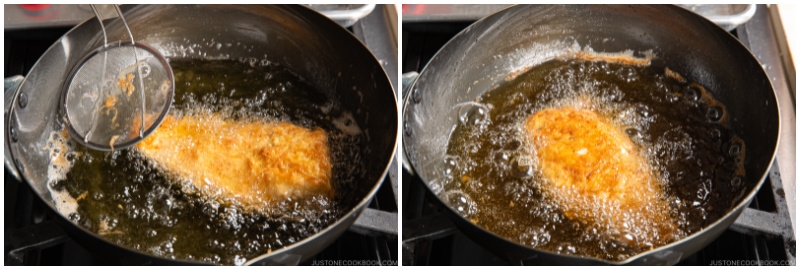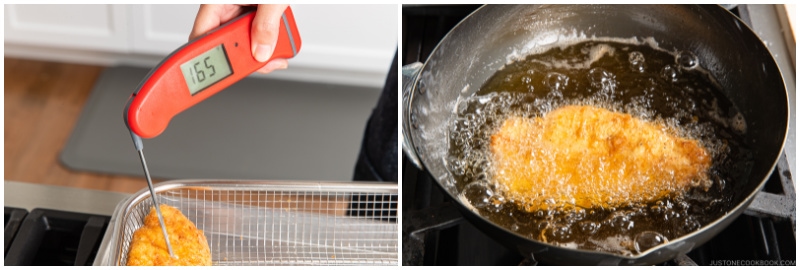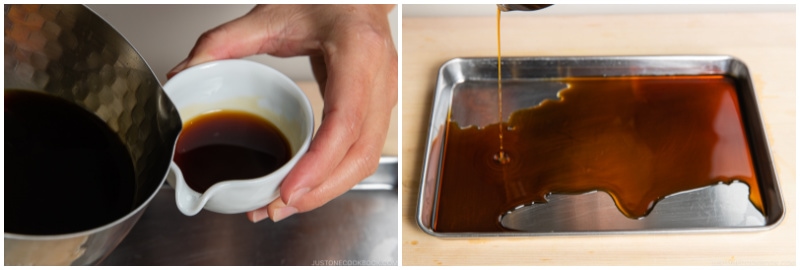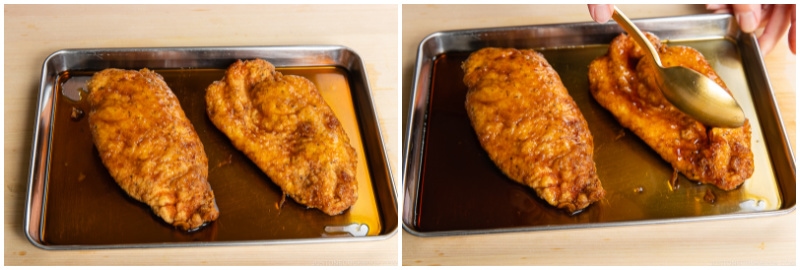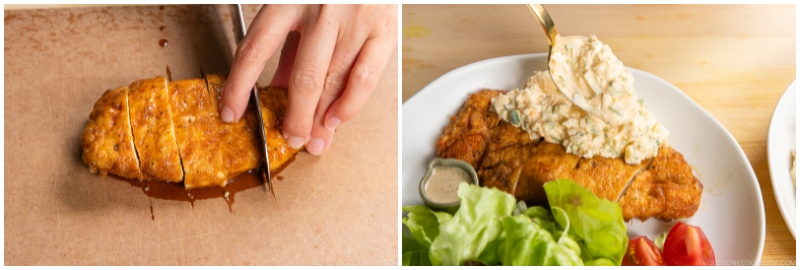From a small region in southern Japan, Chicken Nanban (チキン南蛮), once a relatively unknown dish, has become one of the country’s most popular ways to enjoy fried chicken (karaage). The dish is made with fried chicken dressed with a sweet and tangy nanban sauce and served with creamy tartar sauce for the finishing touch. So, what sets Chicken Nanban apart from the other styles of Japanese fried chicken? The flour and egg coating. This method protects the meat from drying out while yielding a light, yet tasty crust that helps to soak up the sauces wonderfully. It is like a whole other level of chicken— you have to taste it to experience it!
What is Chicken Nanban
The origin of the word “nanban” (南蛮) has a pejorative overtone (literally translated to “southern barbarian” from the Chinese word “naanmaan”), but it became a term used in Japan to denote something foreign and highly desirable. When the first Europeans came to Japan in 1543, they arrived from Portugal and brought with them innovative dishes that have become some of Japan’s most popular foods today. Some delicious examples of Portuguese-inspired Japanese dishes include Castella Cake, Tempura, and Salmon Nanbanzuke. Chicken Nanban was created in a small town in the Miyazaki Prefecture of Kyushu, Japan’s southernmost island. Allegedly, it was a humble meal made for the staff of a local diner Nao-chan during the 1950s, and it quickly gained popularity as a menu item throughout Kyushu before finding its way around the rest of Japan.
Quick Overview of This Dish
Flavor: The balance between tender bites of fried chicken, sweet and tangy nanban sauce and creamy tartar sauce are what leaves people wanting more! It’s a unique combination that everyone should try. Texture: The flour-coated chicken is dipped in beaten egg and goes straight into the hot oil. Fried chicken has a nice crunch until it is coated with the refreshing nanban sauce. While the breading is no longer crispy, it still adds to the texture of the dish as being distinctly different from the chicken. With the creamy tartar sauce, the chicken brings layers of unique textures. Time: The nanban sauce and tartar sauce take around 20 minutes to prepare, and prep time for the chicken is about 10 minutes. Once the frying process begins, this dish can be made in less than a half hour!
Nanban Sauce and Tartar Sauce
Chicken Nanban is served with both sweet and tangy nanban sauce (or nanbanzu in Japanese; 南蛮酢) and creamy tartar sauce. However, the original recipe served at Nao-chan did not, and still does not, come with tartar sauce. There are countless variations of this dish and I personally enjoy the complex flavors of the juicy chicken, the slight acidity of the nanban sauce, and the tartar sauce—all in one bite!
How to Make Chicken Nanban
Ingredients You’ll Need
Chicken: You can use boneless, skinless chicken breasts or thighs for chicken nanban—both variations are common in Japan. For my recipe, I used chicken breasts because it is easier to create an even thickness. Flour and Eggs: For coating the chicken. Nanban Sauce: Just 4 ingredients—rice vinegar, soy sauce, mirin and sugar. Tartar Sauce: You need a boiled egg, onion, cucumber, Japanese mayonnaise, rice vinegar, salt and pepper.
Overview: Cooking Steps
5 Recipe Tips for Chicken Nanban
Tip 1: Butterfly the Chicken
Typically, Chicken Nanban is served in one big piece— like a cutlet—that is sliced into pieces. You’ll need to make sure the entire piece of chicken is cooked through evenly, which can be tricky. Therefore, I prefer chicken breasts because they’re easier to butterfly and create an even thickness. When cooked right, breasts should never be dry. On the other hand, thighs can be flavorful, but it could end up with the thinner side being overcooked and the thick side undercooked. If you prefer to use thighs, I suggest pounding them with a meat mallet or cutting them into bite-sized pieces before frying.
Tip 2: Fry at the Right Temperature
99% of a successful fried recipe relies on the technique. The number one rule is to make sure your oil is at the right temperature. Too low, the food will be saturated in oil; too high, the outside will cook faster than the inside. Also, never overcrowd the pan. Use a thermometer for the oil (I use a Thermapen instant-read thermometer and love it!) It takes away any guesswork, ensuring your chicken is properly cooked every time. For a more comprehensive guide on deep frying food, read this post.
Tip 3: Don’t Touch the Chicken in the Oil for One Minute
Once the chicken is added to the frying oil, do not touch or flip for at least a minute. This helps the egg coating to stick and stay on the meat. If you flip too quickly, your utensil may break the thin coating.
Tip 4: Coat the Chicken with Nanban Sauce While Hot
Once all the chicken is done being fried (with excess oil shaken off), toss your chicken with the nanban sauce immediately. This helps the chicken absorb the sauce quickly.
Tip 5: Soak the Chopped Onion in Water
Many people do not enjoy the raw onion taste (sharp and pungent!) and decide to skip it altogether. But wait, I have a tip for you: soak the onion in cold water for 5-10 minutes to rid the astringent taste! We use the same trick to make salad dressing and sauce. For our tartar sauce, the texture of finely-chopped onion is extremely important, giving a fresh crisp bite in the creamy sauce. So, soak the onion prior to making your sauce and say goodbye to that pungent onion taste! On the topic of the tartar sauce, use Japanese mayonnaise such as Kewpie, preferably. It has that signature taste that you’re looking for. If you can’t find it, I have a recipe hack here.
The One Vinegar You Need in Your Pantry
When making this four-ingredient nanban sauce, don’t be deterred by the vinegar. I use rice vinegar because it’s milder in taste and not quite as acidic as other vinegars. The sugar (and mirin) in this sauce is necessary to cut the acidity and complement the fried food. I can’t emphasize enough that it’s important to use rice vinegar when making Japanese food. Rice vinegar is a lot milder than the other kinds of vinegar. The only brand I’ve been using ever since I started cooking is Mizkan Natural Rice Vinegar. I personally use many types of Mizkan sauces and condiments for my home cooking. As a leading brand in Japan for over 215 years, I trust Mizkan for bringing authentic Japanese flavors to our dinner table, just as my grandmother and my mom did. If you love using vinegar in your cooking, you can follow Mizkan on Facebook, Instagram, Twitter, and Pinterest for Japanese-inspired recipes and other quick and delicious usage ideas.
How to Enjoy Chicken Nanban
Chicken Nanban is typically enjoyed as a main dish to serve with rice and a side of soup. Since it’s a fried dish, it’s always best to serve with more vegetable-focused side dishes. Here, I serve the Chicken Nanban with the green lettuce with the Japanese sesame dressing, but you can enjoy it with other salads such as:
Japanese Cucumber Salad Asian Coleslaw with Sesame Dressing Japanese Potato Salad Tofu Salad with Sesame Ponzu Dressing Japanese Kani Salad Harusame Glass Noodle Salad Japanese Macaroni Salad
Wish to learn more about Japanese cooking? Sign up for our free newsletter to receive cooking tips and recipe updates! And stay in touch with me on Facebook, Pinterest, YouTube, and Instagram. Editor’s Note: The post was originally published on January 22, 2011. The blog post has been completely updated with new content, new images, and the revised recipe on March 9, 2022.
